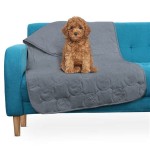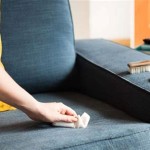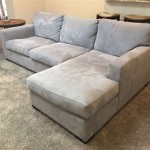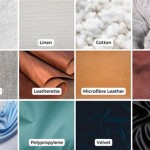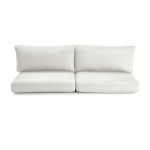Types of Material for Couches: A Comprehensive Guide
Choosing the right material for a couch is a crucial decision that affects its longevity, comfort, aesthetics, and maintenance requirements. A couch represents a significant investment, and selecting a suitable fabric or upholstery material can ensure it meets the needs of the household for years to come. This article provides a comprehensive overview of various couch materials, highlighting their key properties, advantages, and disadvantages to assist in making an informed decision.
Natural Fibers
Natural fibers are derived from plants and animals and offer unique textures, breathability, and aesthetic qualities. These materials often appeal to consumers seeking sustainable and eco-friendly options. However, they may also possess certain drawbacks in terms of durability and stain resistance compared to synthetic alternatives.
Cotton: Cotton is a widely available and relatively affordable natural fiber known for its softness and breathability. It is comfortable to the touch and comes in a variety of weaves and textures. Cotton's breathability makes it a good choice for warmer climates. However, cotton is susceptible to staining, wrinkling, and fading, particularly when exposed to direct sunlight. It generally needs to be treated with stain-resistant finishes to enhance its performance as a couch material. Blended cotton fabrics, incorporating polyester or other synthetic fibers, often offer improved durability and stain resistance while retaining some of cotton's desirable qualities.
Linen: Linen is a luxurious natural fiber derived from flax plants. It is prized for its strength, breathability, and distinctive texture. Linen is also relatively resistant to pilling, making it a durable option for upholstery. It has a relaxed and sophisticated appearance, often favored in coastal or bohemian-inspired interiors. However, linen is prone to wrinkling and can be expensive compared to other materials. It also tends to stain easily and requires professional cleaning. Like cotton, linen can be blended with other fibers to improve its wrinkle resistance and durability.
Wool: Wool is a natural fiber sourced from sheep. It is known for its exceptional durability, warmth, and natural stain resistance due to its lanolin content. Wool is also naturally flame-retardant, making it a safer option for homes. It possesses a luxurious feel and appearance and is available in various textures and weaves. However, wool can be relatively expensive, and some individuals may be sensitive or allergic to it. Wool upholstery often requires professional cleaning and can be susceptible to damage from moths if not properly maintained. Blended wool fabrics can mitigate some of these drawbacks while retaining many of its desirable properties.
Leather: Leather is a durable and luxurious material derived from animal hides. It is known for its distinctive appearance, supple feel, and ability to develop a unique patina over time. Leather is relatively easy to clean and maintain, and its durability makes it a long-lasting choice for upholstery. There are various types of leather, including full-grain, top-grain, split-grain, and bonded leather, each offering different levels of quality and durability. Full-grain leather is the highest quality, retaining the natural grain and imperfections of the hide. Top-grain leather has had the top layer sanded and finished, making it more uniform in appearance. Split-grain leather is taken from the lower layers of the hide and is less durable. Bonded leather is made from scraps of leather bonded together and is the least durable option. Leather can be expensive, and it can be susceptible to scratching and fading if not properly cared for. It can also be uncomfortable in hot weather as it doesn't breathe as well as natural fibers like cotton or linen.
Synthetic Fibers
Synthetic fibers are manufactured from chemical compounds and offer a wide range of properties, including durability, stain resistance, and affordability. These materials are often designed to mimic the look and feel of natural fibers while offering enhanced performance characteristics.
Polyester: Polyester is a widely used synthetic fiber known for its durability, stain resistance, and affordability. It is resistant to fading, wrinkling, and stretching, making it a practical choice for high-traffic areas. Polyester can be blended with other fibers to enhance their properties. It retains its color well and is relatively easy to clean. However, polyester is not as breathable as natural fibers and can feel less comfortable in hot weather. It is also prone to pilling and can generate static electricity. Recycled polyester is becoming increasingly common, offering a more sustainable alternative.
Microfiber: Microfiber is a type of polyester fabric composed of extremely fine fibers. It is exceptionally soft, durable, and stain-resistant. Microfiber's tight weave makes it resistant to liquids and dirt, making it easy to clean. It is also resistant to fading and wrinkling. Microfiber is a popular choice for households with children and pets. However, it can trap heat and may not be as breathable as natural fibers. It can also attract and hold onto pet hair. Regular vacuuming is recommended to maintain its appearance.
Acrylic: Acrylic is a synthetic fiber that resembles wool. It is known for its softness, warmth, and resistance to fading. Acrylic is also relatively affordable. It is often used as a substitute for wool in upholstery applications. It is resistant to moths and mildew. However, acrylic is not as durable as other synthetic fibers and can be prone to pilling. It can also generate static electricity. Acrylic is often blended with other fibers to improve its durability and performance.
Olefin: Olefin, also known as polypropylene, is a synthetic fiber known for its exceptional durability, stain resistance, and resistance to moisture. It is often used in outdoor furniture due to its ability to withstand the elements. Olefin is also resistant to fading and abrasion. It is relatively affordable and easy to clean. However, olefin is not as soft as other synthetic fibers and can feel somewhat rough to the touch. It is also susceptible to heat damage. Olefin is a good choice for high-traffic areas and households with pets.
Blended Fabrics
Blended fabrics combine the properties of two or more different fibers to create a fabric that offers a balance of benefits. These blends can improve the durability, stain resistance, comfort, and appearance of the upholstery.
Cotton-Polyester Blend: This is a common blend that combines the softness and breathability of cotton with the durability and stain resistance of polyester. The ratio of cotton to polyester can vary, affecting the overall properties of the fabric. A higher percentage of polyester typically results in increased durability and stain resistance, while a higher percentage of cotton provides greater comfort and breathability. This blend is a versatile and affordable option for a variety of upholstery applications.
Linen-Cotton Blend: This blend combines the luxurious texture and breathability of linen with the affordability and ease of care of cotton. It offers a more wrinkle-resistant alternative to pure linen while retaining some of its desirable properties. This blend is often used for slipcovers and upholstery in casual or coastal-inspired interiors.
Wool-Synthetic Blend: This blend combines the durability, warmth, and stain resistance of wool with the affordability and ease of care of synthetic fibers such as nylon or polyester. It offers a more budget-friendly alternative to pure wool while retaining some of its benefits. This blend is often used for upholstery in high-traffic areas and commercial settings.
Factors to Consider When Choosing Couch Material
Selecting the right couch material involves considering several factors, including lifestyle, budget, aesthetic preferences, and maintenance requirements. Evaluating these factors will help narrow down the options and ensure the chosen material meets the specific needs of the household.
Lifestyle: Households with children and pets require more durable and stain-resistant materials. Microfiber, polyester, and leather are good options for these environments. Homes with less traffic may accommodate more delicate fabrics like linen or silk.
Budget: The cost of different couch materials can vary significantly. Leather and high-quality natural fibers are generally more expensive than synthetic fabrics. Setting a budget beforehand will help narrow down the choices. It is also important to consider the long-term cost of maintenance and cleaning.
Aesthetic Preferences: The chosen material should complement the overall style and decor of the room. Consider the color, texture, and pattern of the fabric. Natural fibers often offer a more relaxed and organic look, while synthetic fabrics can provide a more modern and streamlined appearance.
Maintenance Requirements: Different materials require different levels of maintenance. Some fabrics are easy to clean with soap and water, while others require professional cleaning. Consider the amount of time and effort required to maintain the chosen material.
Durability: The durability of a couch material is a crucial factor, especially for frequently used furniture. Materials like leather, microfiber, and olefin are generally more durable and resistant to wear and tear than cotton or linen.
Comfort: The comfort of a couch material is essential for enjoyment. Consider the texture and breathability of the fabric. Natural fibers like cotton and linen are generally more breathable and comfortable in warm weather, while wool can provide warmth and insulation in colder climates.
Conclusion
Selecting the appropriate material for a couch is a significant decision that requires careful consideration of various factors. By understanding the properties, advantages, and disadvantages of different natural and synthetic fibers, as well as the benefits of blended fabrics, consumers can make an informed choice that aligns with their lifestyle, budget, and aesthetic preferences. A well-chosen couch material will not only enhance the comfort and appearance of the living space but also ensure the longevity and durability of this important piece of furniture.

Better Materials For Sofa Leather Vs Fabric

17 Types Of Sofa Materials In Malaysia Best Fabrics For Your Couch Frwd By Cuura Space

What Are The Top 10 Fabrics For Sofas Picket Rail Custom Furniture

What Is The Best Fabric For A Sofa Living Designs Furniture

Sofa Fabric Types Crate Barrel

The 5 Most Popular Types Of Upholstery Fabric

Guide To Diffe Types Of Sofa Fabric Patterns Furnishing

The Best Fabric For A Sofa Choosing Right Material Your Home

Fabric Sofas Ing Guide All You Need To Know Swyft
The Ultimate Guide To Sofa Fabrics Upholstery Material Vevano

